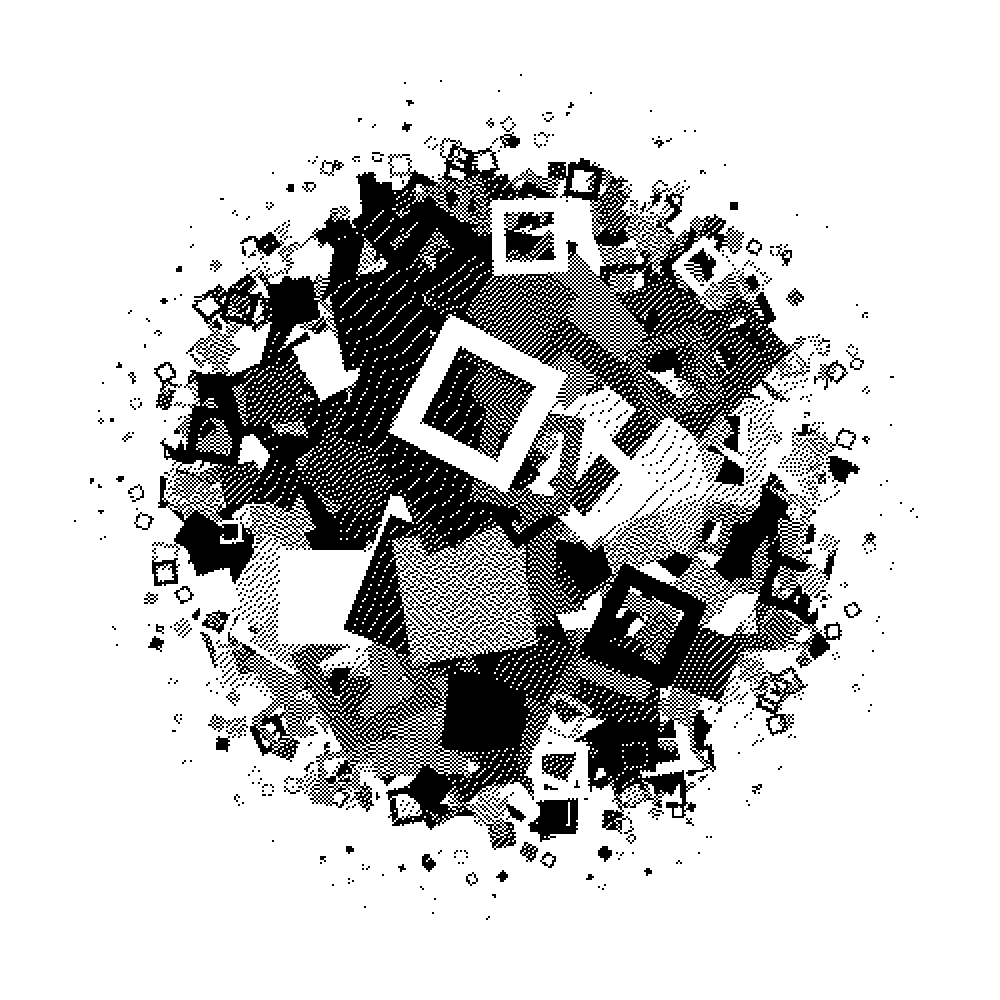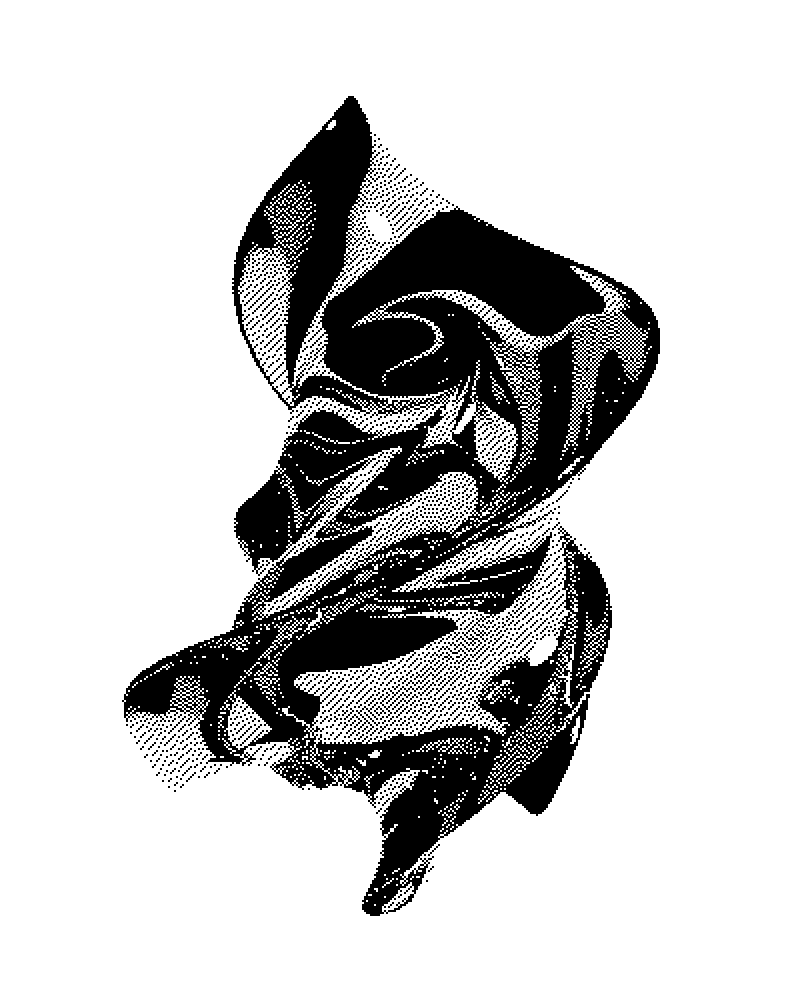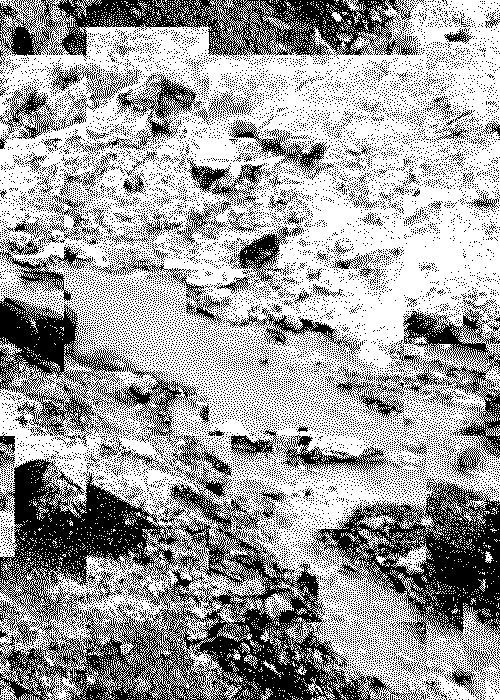THE MOTION ART JOURNAL: LOACKME, GENERATIVE RETRO WATERFALLS
JANUARY 6TH, 2022
Loackme, who is based in Amsterdam and whose name is Loic Schwaller, used to work in academia as a mathematician but now does art and graphic design for a living. He has no formal art training, but has been drawing and creating as long as he can remember. He was immediately drawn to the tezos ecosystem due to its ecological footprint because of proof-of-stake and has been minting in that environment since March of 2021.
Loackme almost always works in motion, and limits himself to gifs that are black, white and dithered, although he has been making excursions into the fxhash world, as he discusses below. To create his gifs he mainly uses Processing, occasionally Blender and After Effects, but also p5.js and fragment shaders. This was interesting to me because I often feel that too hard a line is drawn between 'generative' artists and 'non-generative' artists. I use Blender and After Effects, but do not write code, and sometimes people mistake my work as generative. I see some artists that make work that looks exactly like it was created by code when in fact they made it by hand - literally.




The aesthetic that is represented in Loackme's work is squarely in that arena. He works with geometric shapes in motion. In his best pieces he really captures that 'waterfall' feeling that I discussed in my previous piece, and which is a key to the Motion Art aesthetic. You can find yourself watching one of these works for a long time because the timing and the motion are hypnotic and enjoyable. The tempo of his motion suits the changes of the artwork well. Often I see work like this where the speed is too fast, or sometimes too slow. These works flow by like water, despite the fact that they are often simply gray dithered rectangles. This is the magic of Motion Art.
I asked Loackme some questions about his work and he generously provided some in depth answers.
Why do you work with gif files?
First I really like looped animations, in which there is no real end or beginning. I find these loops (that people sometimes qualify as ‘perfect’ to put emphasis on the lack of visible transition) very satisfying. Video formats such as mp4 are not really adapted to seamless looped playback. Depending on the device you are playing the video on, the way it's encoded, etc, the transition back to the beginning of the file at the end of it will be visible and completely ruin the loop. On the contrary, gifs are made for this, since you specify how many times a file is supposed to be played, 0 being indefinitely.
I also work a lot with dithering and pixelated art. Video formats are usually terrible with this kind of image because it’s not what they have been optimized for. The gif format offers much more control on color palette and compression in this particular use case.
Finally, I think I also see the gif format as a challenge. Exporting animations in gif can produce enormous files, but if you carefully plan your animation to take as few frames as possible and use a few other tricks, you can actually get some incredibly small files. Optimising the size of gif files is part of the artistic process for me.
Why do you work primarily in black and white?
Black and white is just what comes more naturally to me. Black and white also fits with the minimal aesthetic I’m attracted to. It almost feels like colours would get in my way somehow, because there are just too many of them and I can struggle with decision making.
Why do you like dithering?
I find dithering both visually pleasing and conceptually interesting. The fact that black and white pixels are enough to create the illusion of many shades of grey just by hacking the way our eyes work is fascinating and I’m just a sucker for the retro look it gives to everything.
Dithering used to be the answer to hardware/software limitations, going back to print and the first computers. Using it by choice and in combination with what computers are now able to achieve leads to very interesting outputs. You can simulate very complex systems with ten of thousands of variables and render the result with a few black and white pixels. I love to explore this discrepancy.
Dithering also allows you to play with scale and point-of-view. A dithered image becomes completely abstract when you look at it up close. The bigger picture only reveals itself from afar.
It almost feels like I’m writing a love letter to dithering.
What is it you are trying to achieve when you create a new work?
I usually try to create things that I find satisfying, in one sense or another. That’s why I’m making a lot of loops, because I find them so peaceful to watch. I hope that this feeling of satisfaction is shared by the people who look at my art.
Explain the difference in your approach for making gifs or making fxhash work. How do you feel about the fxhash format in general?
Fxhash has been so much fun to play with! I have noticed that my approach is completely different when I’m working on a project for fxhash. Things don’t have to loop, they can just go on forever if you want them to. That’s the freedom of code running live!
Another important difference between fxhash projects and gif making is curation. When I make gifs, even with a generative system, I can see exactly what the final piece looks like. I can tweak a parameter if I don’t like something, change this or that to make it to my liking. With fxhash projects, you have to make sure that all outputs are interesting, while allowing enough variation to not make the whole collection look repetitive.
The approach is much more involved but the reward is worth it, since you get a multitude of pieces as a result. And there’s the thrill of waiting for the outputs to reveal, shared by the artist and the collectionneur.
What artists do you admire?
One of the artists I admire the most is M.C. Escher. I find his work fascinating in the ways he plays with geometry and perspective. I remember the first time I saw the Waterfall. I couldn’t stop looking at this perpetual motion machine.
I’m also a huge fan of Zach Lieberman and Matt DesLauriers’ work.
Do you think that Motion Art is a new aesthetic?
Motion Art doesn’t completely feel like a new aesthetic to me. If anything, I would even say that it feels a bit retro. Animated dioramas were a thing before gifs even existed. What we call motion art is a continuation of this movement and aesthetic, with new tools.
Authors note: While I agree with Loackme that phenakistoscopes and zoetropes are presented as a loop and similar to the concept of Motion Art today, there is a big difference in that the breadth and depth of its penetration into people’s lives is much much greater. These devices were separate mechanical objects that you had to dedicate special attention to, whereas Motion Art today is embedded with all the rest of your content on your various computing devices, making it part of your life in a way that a zoetrope really never could be. And this of course will affect the aesthetic principles. A zoetrope was very limited by its mechanical nature, whereas Motion Art today is often made with the most sophisticated software available and limited only by the imagination of the creator.

